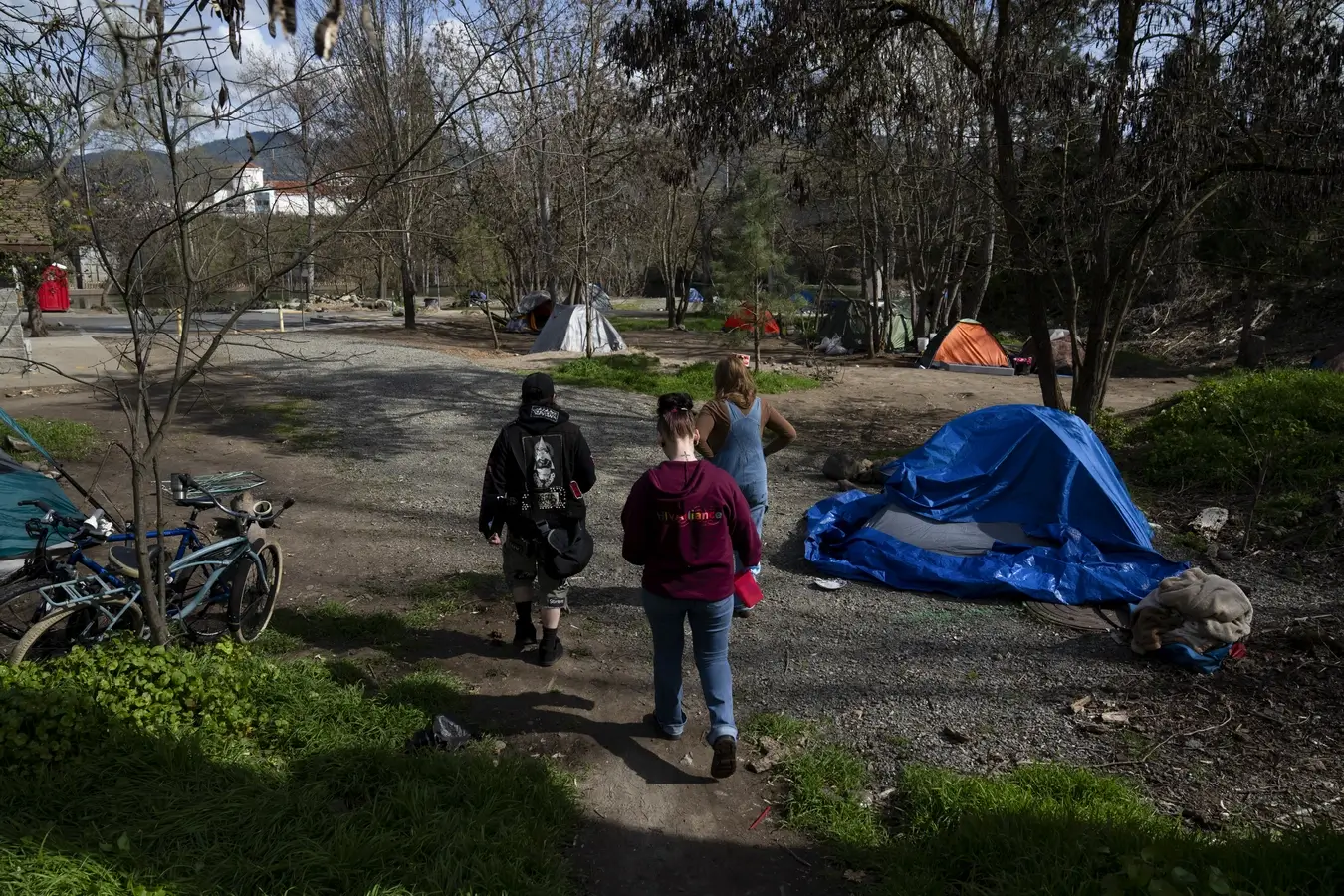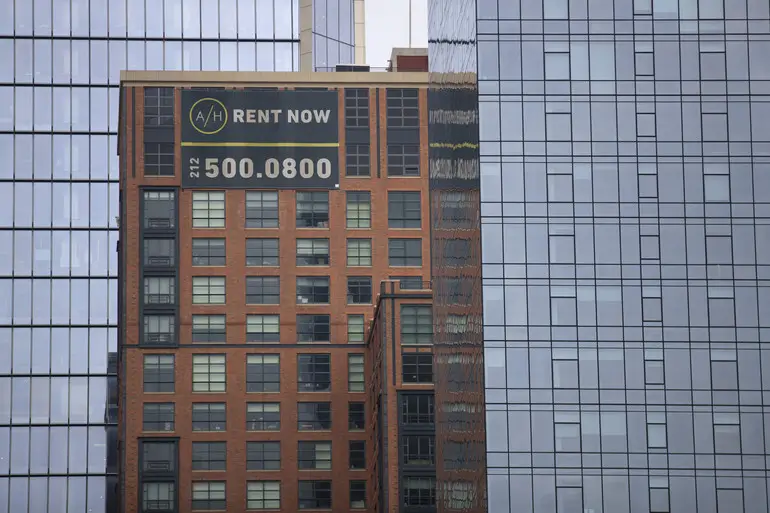Six states where housing is hard to find: Here’s what governors are doing about it


Population changes spurred by the pandemic. Byzantine zoning laws that make construction agonizingly slow and expensive. Stagnant wages amid stubborn inflation rates.
All these factors have contributed to years of skyrocketing housing prices — and leaders in Washington, including President Biden — have shown little ability to get a handle on the issue. That’s putting even more pressure on governors to come up with solutions to the affordable housing crisis.
But those state leaders are facing steep obstacles — and potential electoral consequences in November if they fail to make inroads. The issue is increasingly critical for Americans across demographic and partisan lines, with a recent poll showing three-quarters of voters citing housing affordability as a significant problem.
Governors are responsible for guiding a broad strategy for building more houses, and they must navigate cumbersome laws and regulations that hike up construction costs and delay ribbon cuttings for new developments.
“If governors don’t successfully confront the need to get rid of some of these expensive rules, they are going to pay a political cost because people are seeing they’re talking so much about housing but nothing is changing,” said Michael Andersen, director of cities and towns with Sightline Institute, a think tank focused on affordable housing issues.
POLITICO took a look at what steps governors from across the country are taking to ease the affordable housing crisis, from prioritizing construction of smaller-footprint homes to expanded protections for renters. They’re testing a variety of approaches in hopes that some will make a dent in a systemic problem that has a huge impact on the monthly budgets of most Americans.
CALIFORNIA
Democratic Gov. Gavin Newsom’s strategy to address California’s worst-in-the-nation housing shortage is, effectively, a crackdown on local governments that make it difficult to build in affluent coastal areas.
Since his first month in office, Newsom has touted lawsuits filed against cities that flout state-assigned targets for building new homes. He’s also signed dozens of bills that mandate local governments streamline their planning processes.
Newsom argues that cities, especially his hometown of San Francisco, have blocked new housing by subjecting developers to endless planning reviews and complaints from neighbors, including objections over architectural character and obstructed views.

The governor has been equally sharp in his criticism of deep-blue and red locales that object to housing mandates — from the liberal Bay Area to GOP-led beach towns in Orange County.
“You’re either part of the problem or you’re not,” Newsom said last month at a press conference where he criticized Millbrae, a small city south of San Francisco that is fighting a project to convert a La Quinta Inn into homeless housing.
State officials estimate that California must plan for 2.5 million new housing units by 2030 to begin to meet the needs of its 39 million residents and address soaring prices. That would require cities to plan for about 180,000 new units annually; last year, construction started on fewer than 112,000 units.
Jason Elliott, Newsom’s deputy chief of staff and closest adviser on housing, said the governor’s perspective that California cities have exacerbated the housing crisis was forged by his time as a mayor and city supervisor in San Francisco — when he often faced opponents who used the city’s lengthy planning process to block construction.
“Up until Governor Newsom, there was no consequence for saying ‘No’ to housing,” Elliott told POLITICO. “Housing death by 1,000 paper cuts will never help us solve our affordability challenge.” (Dustin Gardiner)
UTAH
Republican Gov. Spencer Cox has called Utah’s skyrocketing housing prices the biggest threat faced by the state.
Utah, like most of the Mountain West, has experienced a huge population boom driven by remote workers lured by Utah’s outdoor recreation culture. A recent legislative audit found that Utah needs to build nearly 28,000 new housing units just to keep up with projected growth.
That rapid growth is one reason why home prices have soared: The medium price of a home in Utah is $501,652 compared to the national average of $342,941.
So Cox has set a goal of building 35,000 “starter houses” costing less than $300,000 by 2028.

Utah Gov. Spencer Cox is up for reelection and facing a primary challenger who has blamed Utah policies that favor large developers for the high cost of housing. | Rick Bowmer/AP
The state Legislature largely got on board with that vision this session, passing several bills intended to ease the cost of building single-family homes. That included a measure that created a $300 million fund to supply builders with lower-interest loans under an agreement that 60 percent of the houses they build must be “attainable” starter homes. But they stopped short of granting Cox the $150 million he requested to pursue his starter home vision.
Cox is up for reelection and facing a primary challenger who has blamed Utah policies that favor large developers for the high cost of housing. While Cox’s opponent, state Rep.Phil Lyman, earned support from two-thirds of delegates at the GOP convention in April, Cox maintains a sizable lead in polls.
Cox has taken a free-market-based approach in encouraging cities and towns to take the lead in spurring housing development — for now. But he has threatened that if municipal officials don’t quickly act on their own to increase housing stock, state officials may step in with more aggressive action like changing zoning laws — a move that would set up a bitter fight between state and local leaders. (Liz Crampton)
OREGON
Oregon has one of the highest rates of homelessness in the country.
Homeless encampments have particularly plagued the state, and the battle between its residents and government officials trying to police the encampments has reached the Supreme Court. The state ranks fourth in failing to produce enough housing for its residents, behind California, Colorado and Utah. Oregon is currently behind in building 140,000 housing units and needs to produce over 400,000 homes in the next 20 years to keep up with demand.
Democratic Gov. Tina Kotek made it a top priority this year for the Legislature to pass her $500 million request addressing the housing shortage, though the legislature slashed that number down to $369 million.

Kotek signed the funding bill in April meant to help backfill the decadeslong housing shortage. The funding package allocates money toward building middle-income housing, homeless shelters, infrastructure projects such as the extension of sewer systems and rental assistance to prevent evictions.
State Rep. Pam Marsh, chair of the state House’s Committee on Housing and Homelessness, pointed to the pandemic and wildfires in 2020 as events that supercharged homelessness in the state.
The year 2020 was also when Oregon became the first state to decriminalize the possession of “hard drugs” after voters approved a ballot measure, though it didn’t take effect until February 2021. Elected officials have since blamed the law for open-air drug use and overdoses, and Kotek signed a bill into law in April repealing the measure. Nationally, more than one-third of homeless people experience alcohol and drug problems.
“It’s very challenging across the state because we’ve had to really quickly build a homelessness support system,” Marsh said. “We’ve built out our shelters over the last four years significantly. We are trying to understand the breadth of issues that people need when they’re on the street in order to move into stability.” (Kierra Frazier)
NEW YORK
Democratic Gov. Kathy Hochul took a victory lap on housing this spring.
After a yearslong stalemate, she managed to strike a deal with the state Legislature in April on a suite of reforms to address New York’s worsening housing crisis.
The wide-ranging package, which aims to spur residential construction and expand protections for renters, won’t solve the problem overnight.
But it reflects the heightened political pressure on lawmakers to act amidst a decades-in-the-making housing crunch that has spurred record-high rents and extreme competition for apartments.
The package, which focused primarily on New York City, included priorities Hochul had pushed for years — like reviving a property tax break for rental housing, allowing denser residential development and incentivizing office landlords to convert buildings into apartments.

The deal also included a policy Hochul had resisted that was a top priority of left-leaning Democrats — but fiercely opposed by the city’s influential real estate industry — to restrict how much landlords can raise rents on market-rate apartments.
State legislators are up for reelection this year, which led to skepticism they would take serious action on contentious housing issues.
But a series of data points fueled a sense of urgency, painting an increasingly dire picture of the housing crisis. These include a rising homeless population, a decline in new construction and a rental vacancy rate in New York City that’s at its lowest in more than 50 years.
In celebrating the deal, Hochul called it the “most significant improvement in housing policy in three generations.”
But what ultimately passed was far more limited than the ambitious statewide plan she proposed in 2023. That plan sought to force localities around the state to build more housing, or risk the state overriding local zoning rules. It faced staunch opposition in suburban counties, especially on Long Island, and failed to get through the Legislature.
Hochul dropped those mandates this year, with an eye towards protecting Democrats in competitive House races. But housing advocates say a statewide strategy is essential to truly tackling the housing crisis, and hope Hochul will revive that push next year.
“I don’t think we would have ended up with such a broad or strong package if she hadn’t continued to advocate for housing as a top issue,” said Rachel Fee, executive director of the New York Housing Conference, a research and advocacy group. “The state should be doing a lot more but I think we got as far as we could in an election year.” (Janaki Chadha)
MASSACHUSETTS
Democratic Gov. Maura Healey is pushing a $4.1 billion housing bond bill her office estimates would help generate 65,000 new units of housing.
The massive borrowing bill leans on a mix of tax breaks and policy changes meant to spur construction in a state that needs at least 200,000 more units of housing to meet demand, in the administration’s estimation.
It’s been slow going shuttling the package through Beacon Hill, however. The Massachusetts House voted Wednesday on their own version of the plan, ditching a key policy that would’ve allowed municipalities to levy taxes on high-dollar real estate transactions. But the chamber also tacked on more than $2 billion in borrowing to the bill’s bottom line, sending a $6.5 billion proposal to the state Senate, where leaders will craft their own version of the legislation.

Healey has also thrown her political weight behind a controversial zoning law that’s aimed at generating new housing near transit centers. The so-called MBTA Communities law created deep divides across the state between its supporters and those that take issue with aspects of the law’s application and enforcement. It’s even drawn a lawsuit from the state’s Democratic attorney general, Andrea Campbell, who sued the town of Milton in a case now pending before Massachusetts’ highest court.
As state officials wait for the legal battle to play out, Healey and her number two, Lt. Gov. Kim Driscoll, have essentially hit the campaign trail, holding housing-related events across the state and heaping praise on the communities that have already come into compliance with the law. And this spring, Healey and Driscoll launched a nonprofit advocacy group, One Commonwealth Inc., to push grassroots support for pro-housing policies at the local level. (Kelly Garrity)
ALABAMA
Alabama has one of the lowest workforce participation rates in the country, with barely half of adults employed. State officials are hoping that by bolstering the supply of affordable housing for low-income workers they’ll be able to encourage more people to join the workforce.
Legislation sponsored by Republican state Rep. Cynthia Lee Almond would have initially allocated $15 million annually for 10 years to pay for tax credits designed to spur developers to create affordable housing. Rents in projects that benefit from the credit would be capped at 30 percent of income.
The program would piggyback on a federal tax credit that’s been in existence since the 1980s, but that Alabama has failed to tap into, leaving federal dollars on the table. A fiscal analysis estimated that the program would lead to the creation of 2,500 housing units per year.

But the annual allocation was eventually scaled back to $5 million before passing both legislative chambers. Republican Gov. Kay Ivey signed the legislation last month as part of a six-bill package aimed at bolstering the state’s workforce.
Almond pointed to two pockets of Alabamans who are likely to benefit from the program. The first is people who are currently in Section 8 housing, but would lose eligibility if their income exceeds a certain threshold. The second are people who would be attracted to jobs in fast-growing areas of the state like Huntsville, but are scared off by the high cost of housing.
She sees the modest effort as potentially a gateway to take more aggressive action to address housing affordability in the future.
“We’ll still have an affordability issue even if this is fully implemented,” Almond said. “If we see even small success, we can grow the program and actually make a dent in helping Alabamians afford to return to work and fill these jobs that will in turn help grow our economy.” (Paul Demko)
Source: https://www.politico.com/news/2024/06/11/governors-affordable-housing-00162705
